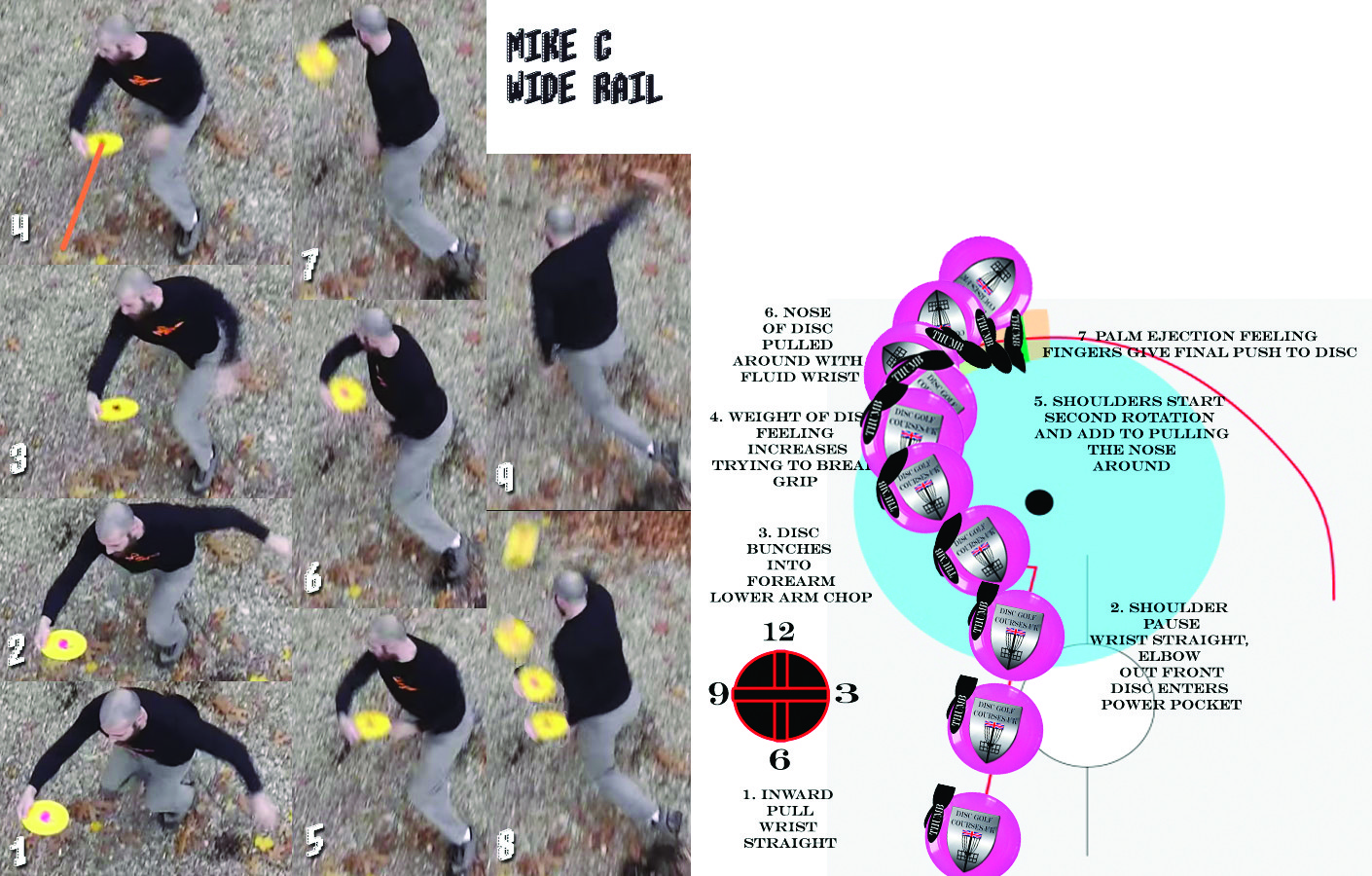Tip of the whip makes sense... in fact, that's the most salient point I gleaned from this discussion:
https://www.dgcoursereview.com/forums/showthread.php?t=132500, the difference being that the OP there said he was keeping the throwing arm passive and cranking up the initial angular acceleration with a low radius twist (forcing the trailing arm held close to pass around the body) with the throwing arm then unfurling like a whip.
That's exactly what I thought of watching Dave D...
I love the overhead view with the overlay of bendy spots to make the whip.. If this was a year ago it would have blown my mind.
The "sling" that he's talking about is the straight line/path that ones arm and disc would take to throw. I watched a lot of Dan Beto back in the day and I was definitely "slinging" it for years. Super accurate but no great distance. Straight path from reachback to release without the pitstop into the power pocket... once I incorporated the power pocket blammo 40'+ instantly.

